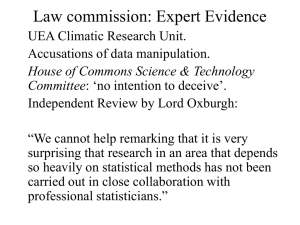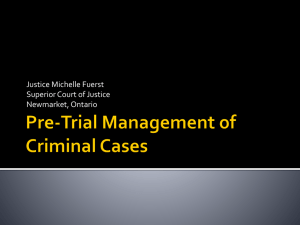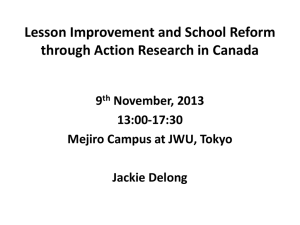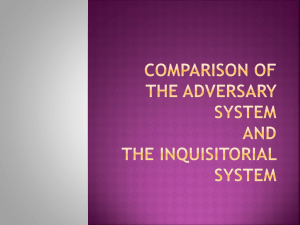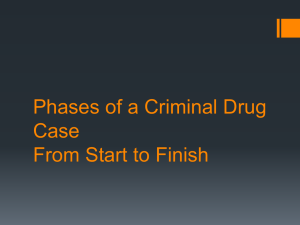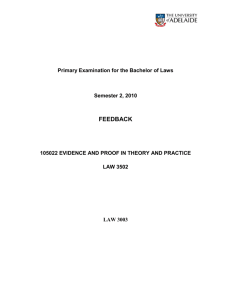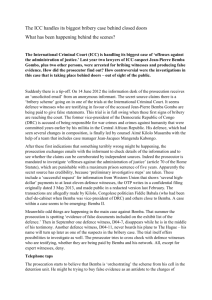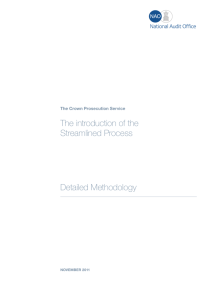Comparative approaches to the implementation of the non
advertisement
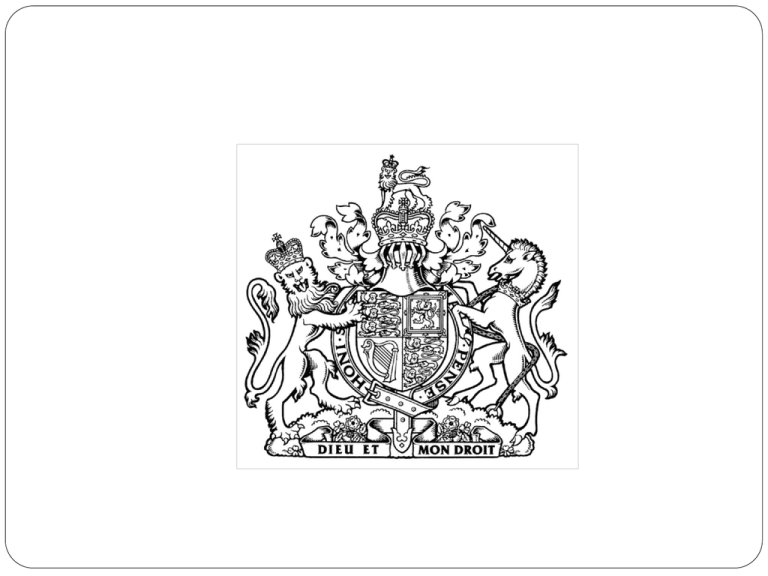
“You have amongst you many a purchas’d slave, Which like your asses, and your dogs and mules, You use in abject and in slavish parts, Because you bought them.” William Shakespeare Shylock speaking in The Merchant of Venice Act 4 Sc1. The Non-Prosecution of Victims of Human Trafficking Some experiences from England & Wales His Honour Judge Martin Edmunds QC The Crown Court at Isleworth Pam Bowen Crown Prosecution Service Warning This presentation applies only to England and Wales (Scotland and Northern Ireland have the same policies but some differences in procedure and personnel). It focuses on prosecutions conducted by the Crown Prosecution Service. These are the vast majority but other agencies also conduct prosecutions. On the procedural issues dealt with in the presentation there are many exceptions not covered. This presentation is not intended to cover all circumstances. Structure of the Criminal Courts Magistrates Crown Court • All cases start here and most are concluded in this Court • More serious cases or cases where the Magistrates’ sentencing powers are in adequate get sent to the Crown Court. • One professional District Judge OR three Lay Magistrates with a legal advisor. • Deals with the more serious offences • The Judge is a Circuit Judge or for very serious offences a High Court Judge. • For trials the Judge sits with a Jury of 12 people. The Jury decides the facts. The Judge advises on the law and determines sentence. A Circuit Judge Sitting with a Jury…………. The Roles in England and Wales Police CPS Court • The Police investigate the alleged crime. • The Police seek the advice of the Crown Prosecution Service on what further evidence is required and what offence to charge. • Crown Prosecution Service advise the Police on evidence and charge. • CPS present the prosecution case in Court. • The Court decides whether the evidence presented by the Prosecution establishes guilt and, if so, determines sentence. • The Judge DOES NOT have an investigatory role NOR (in most cases) a discretion in the decision to prosecute. The CPS Prosecutor’s test for ALL cases TEST • The Full Code Test has two stages: (i) the evidential stage; followed by (ii) the public interest stage. Stage 1 • Prosecutors must be satisfied that there is sufficient evidence to provide a realistic prospect of conviction against each suspect on each charge Stage 2 • In every case where there is sufficient evidence to justify a prosecution, prosecutors must go on to consider whether a prosecution is required in the public interest. The Decision where the accused is suspected to be a victim of trafficking Police • Police may refer to the CPS for consideration of prosecution or • May divert a clear case out of the criminal system • CPS consider the Prosecutor’s Test CPS Court • Where there is suspected trafficking apply the protocol – after consideration by the National Referral Mechanism • Court Stage • If the CPS decide to proceed the Judge may nevertheless stay the proceedings as an abuse of process if the Judge determines that Article 8 criteria are met. The Prosecution Protocol The Three stage Test 1 2 3 • Is there a reason to believe the person has been trafficked ? There is a duty to make proper enquiries through the Police and (with the consent of the suspect) the National Referral Mechanism. • If there clear evidence of a credible common law defence of duress the case should be discontinued on evidential grounds • Even where there is no clear evidence of duress, but the offence may have been committed as a result of compulsion arising from trafficking prosecutors should consider whether the public interest lies in proceeding to prosecute or not. CARE: “Duress” and “Compulsion” are Different in E&W law “Duress is a defence (except to murder and manslaughter) if the offence has been committed as the direct (not indirect) result of a threat of death or serious injury aimed at the defendant or someone sufficiently close to him. But the defence is not established if there was evasive action which the defendant could take, including report to the authorities; and nor can it be established if the defendant has voluntarily associated with people in circumstances which amount to laying himself open to the compulsion to commit offences”. R v M(L) and others [2011] 1 Cr App R 12 “Compulsion” “that they have been compelled to commit as a direct result of being subject to [trafficking] Article 8 “Is the real perpetrator of this crime the trafficker not the defendant” Parosha Chandran “no realistic alternative was available to the exploited victim but to comply with the dominant force of another individual..... The extent to which the crime alleged against him was integral to the exploitation of which he was the victim… a manifestation of the exploitation” R v L/THN [2013] EWCA Crim 991 The Court’s Role In June 2013 there was a key change with the decision of the Court of Appeal in L; HVN;THN; and T [2013 EWCA Crim 991 “In the context of an abuse of process argument on behalf of an alleged victim of trafficking, the court will reach its own decision on the basis of the material advanced in support of and against the continuation of the prosecution. Where a court considers issues relevant to age, trafficking and exploitation, the prosecution will be stayed if the court disagrees with the decision to prosecute.” Lord Judge, Lord Chief Justice Key Advances Clear recognition of the difference between Common Law Duress and Article 8 Compulsion Clear decision making structure – so that if the CPS decide to proceed with a prosecution that decision can be challenged in the Court Where can there be a review if the situation has not been recognised? Crown Court Court of Appeal CCRC • Crown Court • May allow a change of plea if the issue is raised after plea but before Sentence • Court Of Appeal • May allow appeal even when there has been a plea of guilty • Criminal Cases Review Commission • After normal time for appeal has passed may refer a case back to the Court of Appeal. Next steps – The Modern Slavery Bill Going through Parliament NOW Clause 39 – creates a statutory defence for persons compelled to commit an offence. Long list of offences are excluded. It remains to be seen whether it will pass in its current form. Challenges Awareness amongst professionals Communication – Language and Trust Assessment of true age Awareness amongst the trafficked Prosecutor Defence solicitors NGO Police UKBA Competent Authority - Police UKBA - Crime scene Interview Police UKBA Defence solicitors Interpreter Social Services (where suspect is child) Charging Prosecutor/advocate Defence advocate Magistrate District Judge Immigration Judge Crown Court Judge Youth Offender Teams Competent Authority - Preparation Prosecutor Defence solicitors NGO Competent Authority - Court Legal representative Prison Officers Outreach worker Competent Authority - Conviction Prosecutor/advocate Defence advocate Judge Probation officer – Youth Offender Teams - Postsentence
